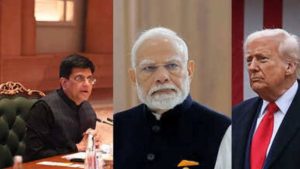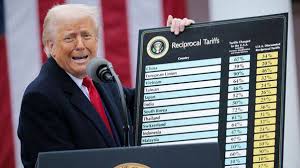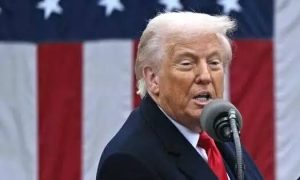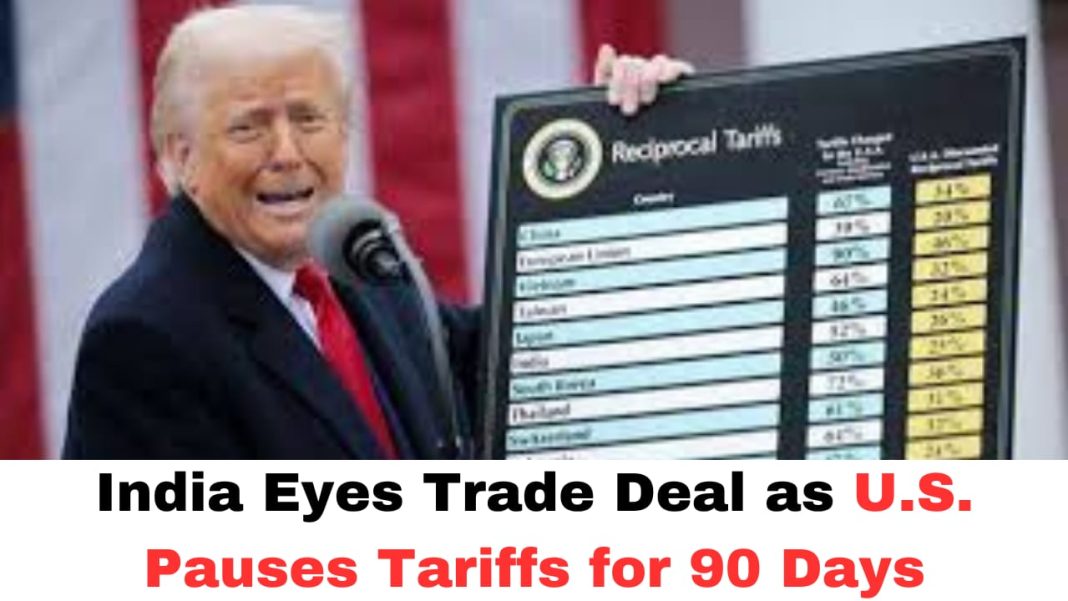Digital News Guru National Desk:
On April 9, 2025, U.S. President Donald Trump announced a 90-day pause on the implementation of new reciprocal tariffs for most countries, including India, while significantly increasing tariffs on Chinese imports to 125%. This unexpected decision has provided India with a temporary reprieve and an opportunity to expedite trade negotiations with the United States.
India’s Response and Strategic Moves
In light of this development, Indian officials are keen to accelerate discussions aimed at finalizing a trade agreement with the U.S. The pause offers a critical window for India to address trade concerns and potentially mitigate the impact of future tariffs.

A government official emphasized that the 90-day suspension is particularly beneficial for Indian exporters, notably those in the shrimp industry, who were facing substantial duties.
India had previously initiated trade talks with the U.S., targeting a bilateral trade volume of $500 billion by 2030. In February 2025, both nations announced plans to complete the first phase of a trade agreement by autumn, aiming to enhance economic cooperation and reduce trade barriers.
Economic Implications and Industry Perspectives
The tariff pause is seen as a strategic opportunity for India to strengthen its trade relations with the U.S. Industry bodies, such as the India Cellular and Electronics Association (ICEA), have urged the government to act decisively during this period to secure favorable terms and bolster India’s export potential.
However, the broader economic outlook remains cautious. Moody’s Analytics has revised India’s 2025 GDP growth forecast downward by 30 basis points to 6.1%, citing the potential economic effects of U.S. tariffs. Key Indian export sectors, including gems and jewelry, medical devices, and textiles, are expected to be most negatively impacted. Despite this, Moody’s suggests that overall growth may remain relatively stable since India’s economy is not heavily reliant on external demand.

Global Market Reactions
The announcement of the tariff pause had an immediate impact on global markets. U.S. stock markets experienced a significant rebound, with the S&P 500 soaring 9.5% on April 9, marking its biggest daily gain since 2008. This surge was attributed to investor relief over the easing of trade tensions.
However, the following day saw a sharp decline, with the Dow Jones Industrial Average falling by 2.1%, indicating ongoing volatility and investor uncertainty despite the temporary tariff relief.
Government’s Perspective
Finance Minister Nirmala Sitharaman emphasized the need for continued support from both the RBI and the government to navigate the economic challenges posed by U.S. trade tariffs. She praised the RBI’s rate cut as a positive step towards reviving economic growth amid global uncertainties. The government is also considering measures such as extended interest subsidies and export diversification incentives to bolster the economy.
Conclusion
The 90-day suspension of new U.S. tariffs presents a crucial opportunity for India to advance its trade negotiations and address existing trade barriers with the United States. While the pause offers temporary relief for Indian exporters, the government and industry stakeholders recognize the need for swift and strategic action to secure long-term benefits and mitigate potential economic impacts. The coming months will be pivotal in shaping the future trajectory of India-U.S. trade relations.

U.S. President Donald Trump announced a 90-day pause on sweeping tariffs for all countries except China. This decision provides India with temporary relief from the previously imposed reciprocal tariffs, allowing for continued trade negotiations during this period.
You May Also Read: Mahavir Jayanti 2025: Lord Mahavir’s 2623rd Birth Anniversary, Celebrations Across India








